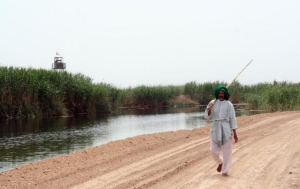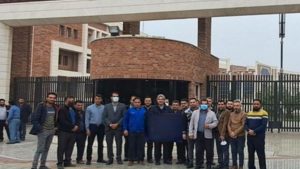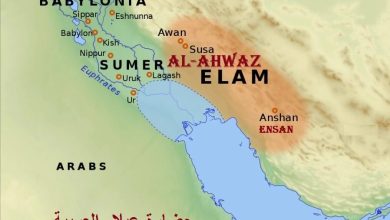
Ahwaz owners of land and history.. This is what the occupation is trying to hide
For decades, the Persian occupation has been trying to portray what is happening inside Ahwaz as a religious or ethnic dispute between Arabs between Sunnis and Shiites and trying in every way to show Ahwaz that they want independence because of this religious disagreement.
The government of the Persian occupation denies the existence of ethnic discrimination or conflict in the country.
The Ahwaz are the indigenous population of the occupied Ahwazi state and constitute the vast majority, as the number of Ahwaz reaches about 12 million Arab citizens who have been suffering oppression and violations by the Persian occupation authorities for years, amid continuous international silence.
The history of the presence of Arabs in Ahwaz dates back to before the Islamic conquests and before the establishment of the Persian Sassanid state.The first Arab empire on its territory was the Mycenaean empire, which was ruled by an Arab king, the most famous of whom was hispassin the Arab.
The Persian historian Ahmad kasrui also stated that the Arabs inhabited the territory during the reign of the first Parthian-ashkanian Kings before the establishment of the Sassanid state.
The famous Persian historian Muhammad ibn Jarir al-Tabari is quoted as saying that the Arab population in Ahwaz supported Ardashir I the Sassanid, who moved from izkhar in Persia to the war of ardwan the Ashkani in Ahwaz, which led to the final fall of the Parthian ashkanian state.
The first mention of the word Khuzestan came after the Sassanids took control of the province and means the country of castles and fortresses.
The Bakhtiari lore
The LOR bakhtiaris are Persian nationalists and consider the Persian nomads their homeland is the province of Chaharmahal Bakhtiari adjacent to Ahwaz and also the province of Lorestan, which is located north of Ahwaz, the LOR bakhtiaris lived a nomadic life moving from one place to another in tents after they were settled in different provinces, including Ahwaz in the “clan housing” project during the reign of the first Pahlavi, and even less before it.
According to historical reports, the bakhtiaris are not considered the original inhabitants of Ahwaz, but they are from the Peoples arriving in the governorate, which is dominated by extreme heat, which contradicts the lifestyle of the nomadic Bakhtiari tribes coming from extremely cold mountain areas
The Iranian adviser Abdul Ghaffar Najm al-Mulk says in his book a trip to Arabistan, who visited the province in ١٨٩٣ m about the Bakhtiari:
“The Bakhtiari (Allur) did not have a foothold on the soil of Arabistan, from the year of the succession of huseynqli Khan Bakhtiari (the chief of the Bakhtiari and the delegate of the state of Iran) to Arabistan, the Bakhtiari clans are sent for five months and starting from winter to the pages of Arabistan, starting from the city of Dezful to ram Hormuz and Ahwaz spread in all regions, this is not welcome among the Arab tribes, but they have no way but to empower and conduct and you don’t find any time of the year when you don’t see bakhtiaris in Arabistan, always, even in the corners and hills of the region, if there are seven or ten Arab families, you must find one Bakhtiari forcibly under any name or address,”he said.
Turkmen Qashqais
Qashqai are Turkmen tribes in Iran, originally native to the cities of Shiraz and Isfahan, especially the northern part of the Fars province in southern Iran, and they speak the Oghuz Turkic language, and Qashqai members live among several pastoral tribes, some members of the Qashqai tribes migrated to the eastern regions of the Ahvaz region, specifically the area of Qal’at Tal and the Seven Hills.
The Ahwaz have been suffering from racial discrimination for 10 years, or despite their acceptance of unjust laws and procedures, they see themselves as the owners of the right and the land, and they must get rid of the occupation one day.




